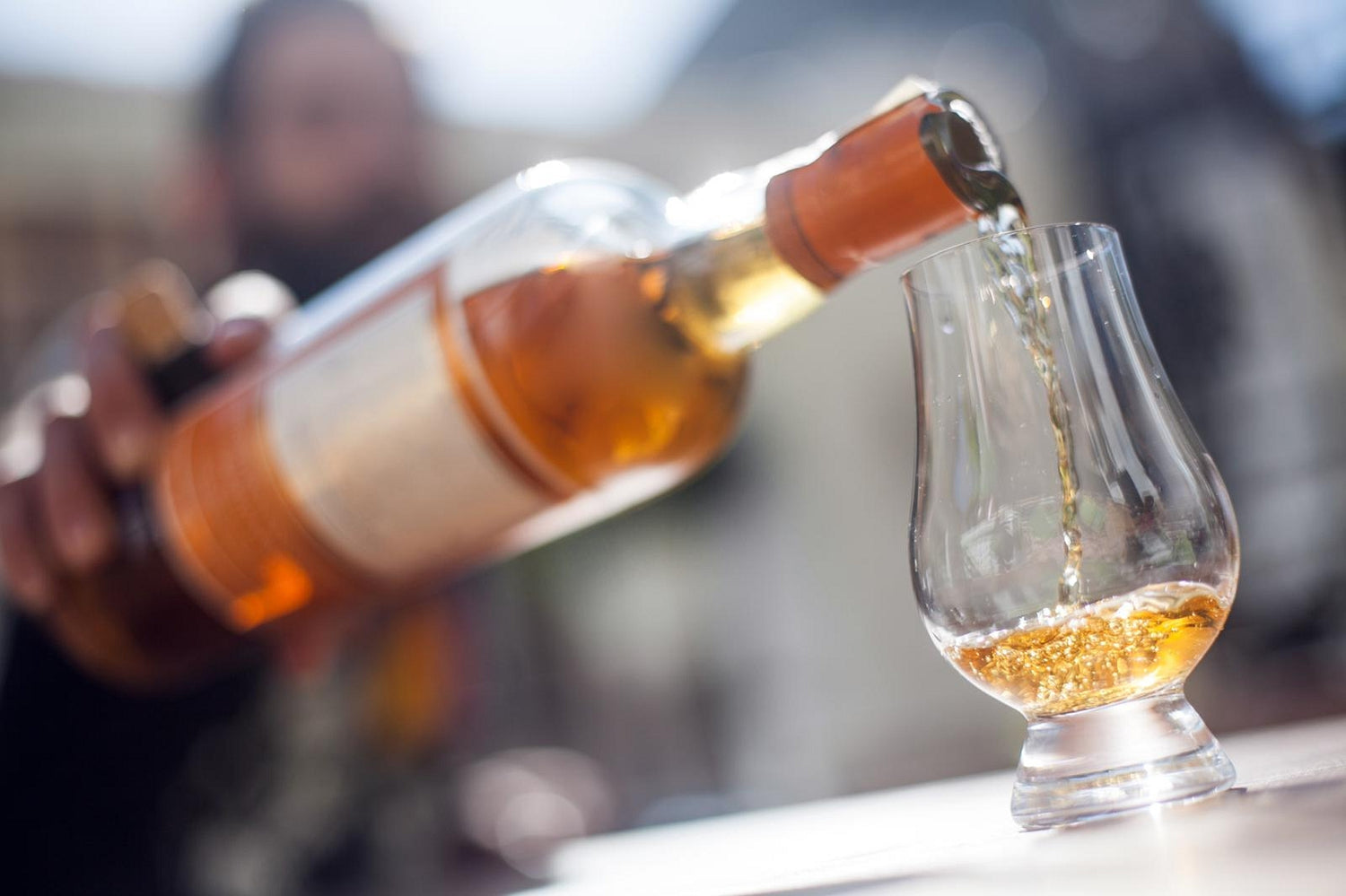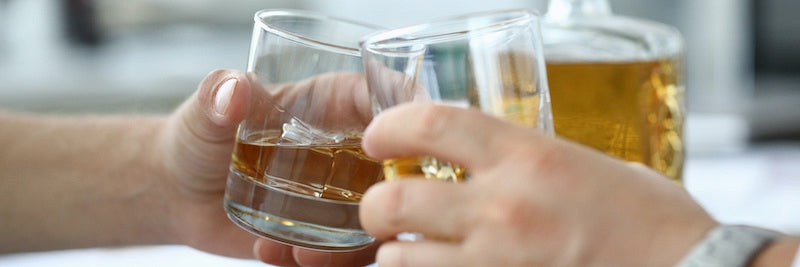As the Ireland Vs. Scotland battle rages on as to ‘Who did it First?’, we’re about to explore the fascinating history of Whiskey on the emerald isle – and throw some amazing ‘little known’ facts your way to tingle your palette and possibly pour some fuel on the fire.
Now, just to be clear, we’re in no way taking sides in the ‘It Was Us’ war, that’s a fight you need to settle yourself. But we will hold your coats.
Right then, let’s look at how it all began …
The Birth of Irish Whiskey
- That’s how far back the first record of Irish whiskey currently goes. The ‘Annals of Clonmacnoise’ account that …
“A.D. 1405. Richard Magrannell Chieftain of Moyntyreolas, died at Christmas by taking a surfeit of aqua vitae. Mine author sayeth that it was not aqua vitae to him but aqua mortis.”
11th century Irish monks get the credit of production. It’s thought they took on the art of distilling perfumes on their many travels to Mediterranean shores. After returning to Ireland, they honed their skills and distilled grain and water to produce a crude version of the gold stuff we all love today.
That puts the Irish argument on the front foot as it’s roughly 90 years before the first written record in Scotland …
- Scottish Exchequer Rolls: “ Eight bolls of malt to Friar John Cor wherewith to make aqua vitae.”
But we can’t take that as ‘conclusive’. New evidence seems to crop up for both sides on a regular basis. The latest of which is a tanned reindeer skin dug up along the River Liffey with carved writing dating back to pre-Christian times.
The translation claims a guy named Pah-Dee talks of his ‘Fire Water’ …
“I resumed heating the murky bubbly mixture of grain and water and collected a fiery liquid through worm and reed pipe. Tastes bad. Made me dizzy and sick and I had to lie down.”
The reindeer skin seems to have disappeared so the Jury’s out on this for now, but I’m sure it won’t be long before counter-evidence is ‘dug up’ for the Scots.
Anyway, let’s get back to Ireland. In 1608, the production of Irish Whiskey developed into an industry when Bushmills opened the world’s first ‘licensed whiskey distillery. Many other distilleries soon followed suit throughout Ireland and their ‘pot still’ mix of malted and un-malted barley quickly gained a favourable reputation.
By the beginning of the 20th century, ‘Irish’ was the most consumed whiskey type in America.
The late quarter of the 20th century brought with it the Irish War of Independence. This was a huge blow to the whiskey industry and when American prohibition also bit, the UK and US markets were all but gone.
Irish Whiskey production fell into a deep decline. Only a few distilleries survived.
Happily, the latter part of the century saw a steady resurgence in production. A 1966 merger between John Jameson and the Cork Distillers began the Irish Distillers Group. This in turn was acquired in 1998 by French distillers Pernod Ricard.
By 2015, a staggering 7 million+ cases of Irish Whiskey were exported.
Today, it’s well over 10 million.
Little Known Irish Whisky Facts
With so many interesting facts and tales to choose from, we’ve put together some of the lesser-known snippets for you to bring up at your next whiskey gathering.
Irish whiskey was once the most popular spirit in the world.
In 1779, there were 1,228 registered Irish distilleries. The Irish Parliament then introduced a crippling act that changed how taxes on whiskey production were calculated. By 1790, distillery numbers fell to 246. Sadly, only 32 licensed distilleries remained open by 1821.
You don’t have to spell Irish Whiskey with an ‘E’.
Originally introduced by Irish distillers to set their whiskey apart from the Scots, the ‘E’ is entirely optional, and many brands choose to leave it out.
Dublin once housed the five biggest distilleries in Ireland.
In 1823, the Dublin distilleries were the largest worldwide. Their combined production was close to an incredible 10 million gallons per year.
Irish coffee was invented by a County Limerick Chef.
On a harsh 1940s winter evening, Joe Sheridan went to meet & greet a group of American visitors to Ireland off a Pan Am flying boat. He added whiskey to their coffee to combat the cold. When asked what they were drinking, Joe replied, ‘Irish Whiskey’.
The delicious floating cream was first added at the Buena Vista Cafe in San Francisco.
Kilbeggan is haunted by its founder, his son – and a former manager.
Derek Acorah (sadly, no longer with us) brought his Most Haunted TV crew to the site and connected with the presence of Matthew McManus (1757 distillery founder), his son, John (executed 1798) and a former manager of the Kilbeggan distillery (Flo Eccles née Locke).
Look out for a forthcoming post on this incredible distillery and the community that saved it.
The founder of Jameson Irish Whiskey was Scottish.
John Jameson. Completely Scottish. Who knew!?
If it’s NOT aged AND distilled in the ROI or Northern Ireland – it can’t be called Irish.
The Irish Whiskey Act of 1980.
Cooley distillery is the only Irish distillery independently owned by an Irish man.
Wow!
Cooley uses double distillation, not triple – and the Sliabh na Gloch River provides the distillery’s water. Classy!
The world’s most expensive Irish whiskey (so far) is £100,000.
That’s all you need to taste this Pure Pot Still Whiskey. Dating back to the late 1800s, it’s one of the last to be distilled at Galway’s ‘Nun’s Island’ which ceased production in 1913. Tempted?
Irish Whisky (and the laws that MUST be followed)
That’s right. Laws must be followed. And rightly so in our opinion.
The Irish Whiskey Act of 1980 sets out the requirements for Irish whiskey production. In addition, detailed definitions are laid out by the Food Industry Development Division of the Department of Agriculture.
Irish whiskey must be:
- Only distilled in ROI or Northern Ireland
- Produced from a ‘mash of malted barley’ (Plus other optional cereal grains)
- Mashed, fermented and distilled to no more than 94.8% ABV
- Matured in wooden casks not exceeding 700 litres for a minimum of three years
- Free from additives other than water and caramel colouring
- Distilled to retain the characteristics of its raw materials
- Bottled at no less than 40% ABV
I’m sure you’ll agree with us that these set-in-stone rules add to the Irish Whisky experience.
The skill of each distillery to create those highly varied flavours is the key to its greatness. And whatever side of the ‘It Was Us’ battle you fight for; the greatness of Irish whiskey is surely indisputable.
Case adjourned. For now.














Leave a comment
This site is protected by hCaptcha and the hCaptcha Privacy Policy and Terms of Service apply.